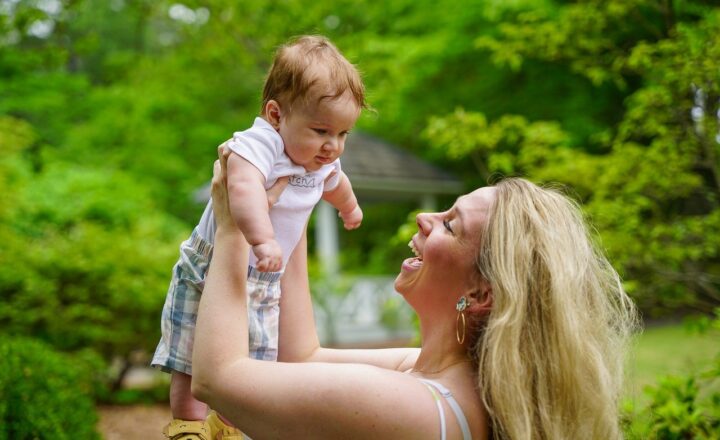
In an age where consumerism and excess often overshadow simplicity, minimalist parenting has emerged as a countercultural movement that champions fewer possessions and distractions for both parents and children. This philosophy advocates for a lifestyle that prioritizes meaningful experiences and intentional living over the accumulation of toys, gadgets, and clothing. However, like any parenting style, minimalist parenting comes with its own set of advantages and challenges. In this article, we will explore the pros and cons of minimalist parenting, helping you find the right balance that works for your family.
1. Understanding Minimalist Parenting
Before diving into the pros and cons, it’s essential to understand what minimalist parenting truly entails. At its core, minimalist parenting encourages:
- Intentional Living: A focus on quality over quantity, emphasizing meaningful interactions and experiences over material goods.
- Less Clutter: Reducing the number of toys and items in the home to create a calm and organized environment for children to thrive.
- Mindful Consumption: Teaching children about the value of things and encouraging them to appreciate what they have rather than constantly seeking more.
This parenting style is about fostering happiness and fulfillment without the burden of excess.
2. The Pros of Minimalist Parenting
Minimalist parenting offers several compelling benefits that can greatly enhance family life:
a. Reduced Stress and Clutter
One of the most immediate benefits of minimalist parenting is a reduction in physical and mental clutter. Fewer toys and possessions mean a more organized space, leading to decreased stress for both parents and children. Parents often find it easier to manage their home, and children are less overwhelmed by choices, allowing them to focus on play and exploration.
b. Financial Savings
By following a minimalist approach, families are less likely to fall into the trap of consumerism. This conscious spending can lead to significant financial savings over time. Parents can redirect these savings towards meaningful experiences, such as travel or educational activities, rather than unnecessary items.
c. Enhanced Family Connections
Without the distraction of excessive toys and technology, minimalist parenting encourages more quality family time. Families often engage in activities that foster connection and bonding, such as board games, outdoor adventures, and shared hobbies. These moments contribute to stronger relationships and create lasting memories for children.
d. Teaching Values of Gratitude and Responsibility
Minimalist parenting provides an excellent platform for teaching children about the importance of gratitude. With fewer possessions, children learn to value what they have and understand the effort that goes into acquiring things. Moreover, a focus on taking care of a few cherished items instills a sense of responsibility.
3. The Cons of Minimalist Parenting
While minimalist parenting holds numerous advantages, it also comes with certain drawbacks:
a. Social Pressure and Criticism
Parents who choose a minimalist approach may encounter social pressure from friends, family, or even society at large. In cultures where consumerism is the norm, minimalist parents may face judgment for their choices. This can lead to feelings of isolation and insecurity about their parenting decisions.
b. Potential for Over-Simplification
There is a risk of over-simplifying childhood experiences. While it is crucial to minimize clutter, some families may inadvertently deprive their children of diverse toys and experiences that can foster creativity and learning. Balancing the need for simplicity with the need for developmental opportunities is vital.
c. Challenges in Communicating the Philosophy
The concept of minimalist parenting can be challenging to communicate to children, especially young ones who may not understand why they can’t have the latest toy or gadget. Parents may spend more time explaining their values and reasoning when children see friends having more material possessions.
d. Balancing Minimalism with Modern Parenting Needs
In today’s fast-paced world, kids often have different needs than those of previous generations. Balancing a minimalist lifestyle with the expectations and demands of modern society (like technology use for education) can create tension and conflict. Finding the right balance that accommodates both simplicity and necessary engagement is essential.
4. Finding the Right Balance
Finding a balance between minimalist parenting and accommodating the needs of children in a modern context can be challenging but achievable. Here are some strategies to help you:
a. Prioritize Experiences Over Things
Focus on spending time together as a family. Prioritize experiences like outdoor activities, family game nights, and travel. These moments enrich your family’s lives and foster connections that outlast the transient joy of material items.
b. Involve Children in Decisions
As children grow older, involve them in decluttering and decision-making around possessions. This helps them understand the reason behind minimalism and empowers them to make thoughtful choices. It also teaches them responsibility for their belongings.
c. Find Meaning in What You Keep
Encourage your child to choose a few treasured toys or belongings. This can help them find meaning and value in their possessions while allowing for a simplified environment. Focus on quality items that truly bring joy and serve a purpose.
d. Set Boundaries with Technology
Technology can be a significant part of modern childhood. Set healthy boundaries around tech use, balancing the benefits of educational tools while maintaining a minimalist mindset. Encourage offline activities and creativity to balance screen time.
5. Conclusion
Minimalist parenting offers a refreshing perspective in today’s consumer-driven society, advocating for intentional living and mindfulness for families. While it brings many advantages, it is essential to navigate the potential challenges with care and thoughtfulness. Finding the right balance between simplicity and engagement can create a nurturing environment that fosters well-being, connection, and a sense of responsibility.
Whether you choose to embrace minimalist parenting fully or incorporate its principles into your family life, the ultimate goal remains the same: nurturing happy, balanced children who are grounded in values of gratitude, connection, and mindfulness. As you embark on this journey, remember that every family is unique, and it’s perfectly okay to tailor minimalist practices to fit your needs and lifestyle.






